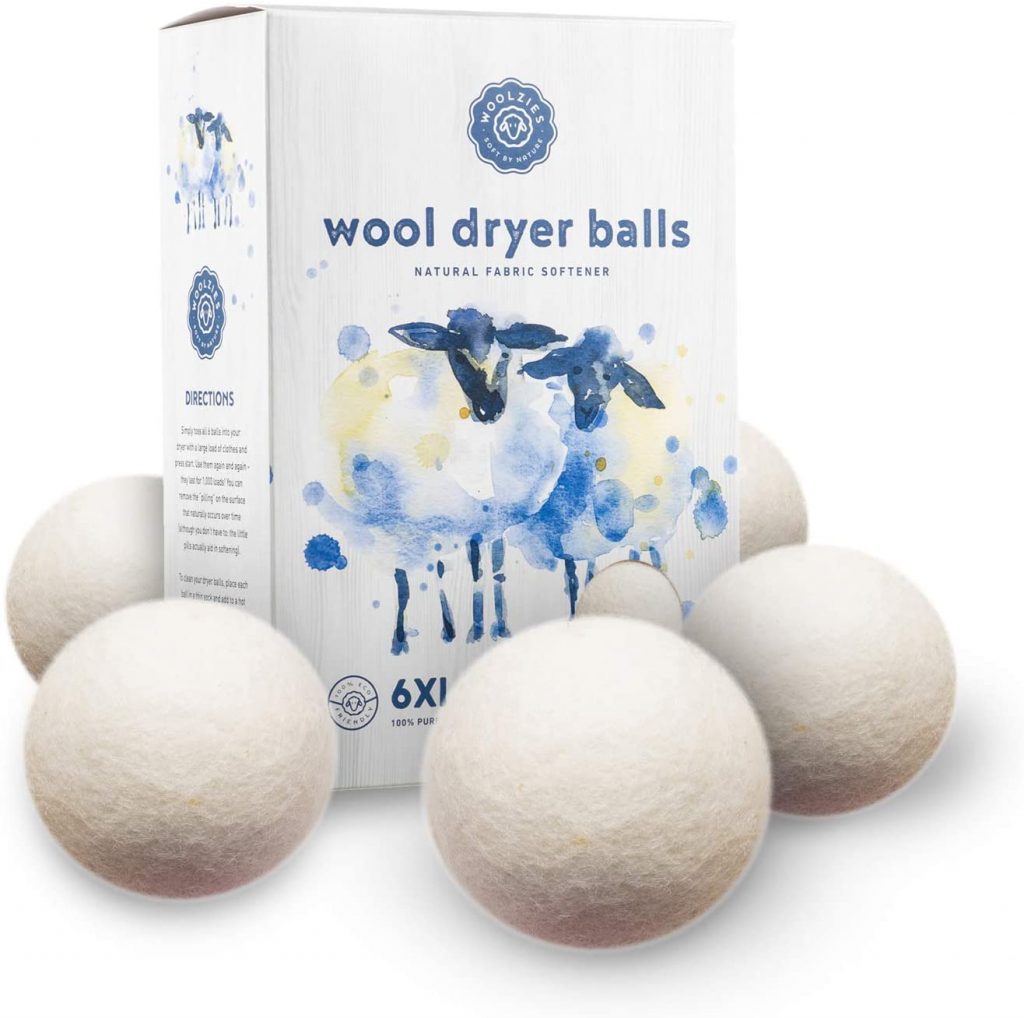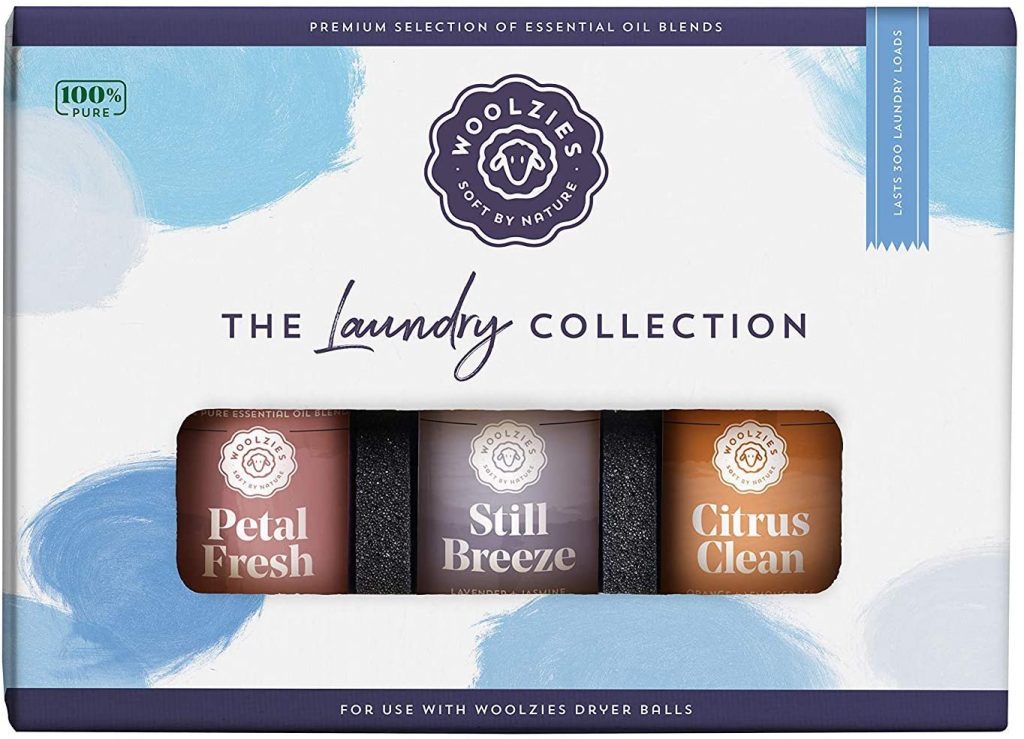Last Updated on March 30, 2023
So you were about to put a load into the dryer, and you realized that you’re all out of dryer sheets.
Is that right?
And now you’re scrambling around the internet. Searching for something else to use as a substitute, instead of having to run to the store.
Ya, we’ve been there too!
But it’s ok. You have options. you can still dry your laundry without dryer sheets, or fabric softener.
For Future Laundry
We’ll get to your current load in just a second. For future loads, you never had to run out of dryer sheets again.
Moving forward, switch to a set of wool dryer balls.

Wool dryer balls are just that. Balls made of wool, that you toss into the dryer. They do the same job as dryer sheets or fabric softeners but in a different way.
Wool dryer balls can be used indefinitely – often for 1000 loads or more! You can use them over and over, and never run out. You’ll never have to buy dryer sheets or fabric softener again.
Assuming you do one load of laundry per week, one set of dryer balls can last for up to 20 years!
The one advantage that dryer sheets or fabric softeners offer is a “fresh laundry scent”. If you prefer unscented sheets then use the wool dryer balls as-is.
If you prefer a fresh-scented load of laundry, add a few drops of essential oils.

Essential oils will add a non-toxic scent.
Just add a few drops to one or two of the laundry balls, and allow them to dry. Then use the balls as you normally would. You’ll have to re-apply the essential oil with every load, but only if you want the extra added scent.
Last Minute Substitution For Dryer Sheets
Back to the problem at hand!
Dryer sheets and fabric softeners accomplish two things. They soften your fabrics and eliminate static cling.
Laundry detergents are negatively charged. This negative charge helps to remove stains from your laundry. But it’s also what creates the static cling.

If you don’t use anything at all, your laundry comes out a staticky clingy mess. The garments will feel dry and crispy. You’ll hear a lot of static sounds. The fabric almost feels gritty.
Fabric softeners and dryer sheets don’t actually make your fabrics soft. They just eliminate static cling.
So we have two common options to choose from. Softening in the dryer, or softening in the washing machine.
Softening In The Dryer
This is the easier option. If you’re relatively new to laundry, this is the option for you – unless you have a load of delicate items. In which case, skip to the next section!
For softening in the drying machine, use some foil balls. They will absorb all of the static energy.
Foil balls essentially work in the same way as the wool dryer balls we talked about above. They aren’t as gentle, and shouldn’t be used indefinitely.
They won’t damage your laundry items unless you use them for every load.

To make the foil balls, just take a sheet of aluminum foil, and crumble it into a ball.
We’re looking for something the size of a tennis ball. If you have tennis balls, you can also just wrap them in a single layer of foil too!
Just drop them in the dryer, add your wet laundry, and run your machine like you normally would.
Softening In The Washing Machine
The best fabric softener alternative is 1/4 cup of vinegar. You can use plain white or apple cider vinegar, for instance. Both will work.
If you know how to use liquid fabric softener, skip the rest of this article, and use vinegar exactly the same way.
If you’ve only used dryer sheets in the past, this method takes a little more work, depending on your machine. But isn’t too hard. Keep reading…
For A Front Loading Machine
Do you have a front loading machine or the older style that has a cup in the column? If so, go ahead and add the vinegar to the dispensing tray, or to the cup in the column like you normally do.
The machine is programmed to add the fabric softener during the rinse cycle. Just add the vinegar, and you’re done.

For An Older Top Loading Machine
If you have an older washing machine, add the 1/4 cup of vinegar directly on top of the laundry.
But when you add it makes a huge difference. If you add it in the beginning, with the detergent, they’ll just cancel each other out. And your laundry won’t be as clean.
You’re going to have to wait until the rinse cycle to add the vinegar.
What And When Is The Rinse Cycle?
Load your dirty laundry into the machine and add your detergent. Choose your settings, then close the top, and press start.
The column will spin to agitate the dirty garments and remove stains. This is called the wash cycle.
Next, the machine will stop, and the dirty water gets pumped out – the spin cycle.
When the spin cycle stops, the machine will start to fill up with water – this is the rinse cycle, and now is the time to add the vinegar.
How will you know when? Just listen. You’ll hear the water flow into the drum just like when you first turned it on.
Is There An Easier Way?
Is the whole cycle process confusing? Does waiting for the rinse cycle sound like too much work?
For future loads of laundry, yes there is an easier way. Use an automatic dispenser ball.

Here’s How It Works:
- Fill the ball with fabric softener (or vinegar)
- Pull the ring to seal the ball
- Drop the ball into the washing machine

During the first two cycles, the ball will just float around inside the machine. The seal will keep the liquid inside of the ball. Then, during the rinse cycle, the spinning will jar the ring loose. This will allow the liquid inside to flow out.
Finally, when the washing machine finishes, add the load to your drying machine. No need for a dryer sheet, just run it as your normally would.
